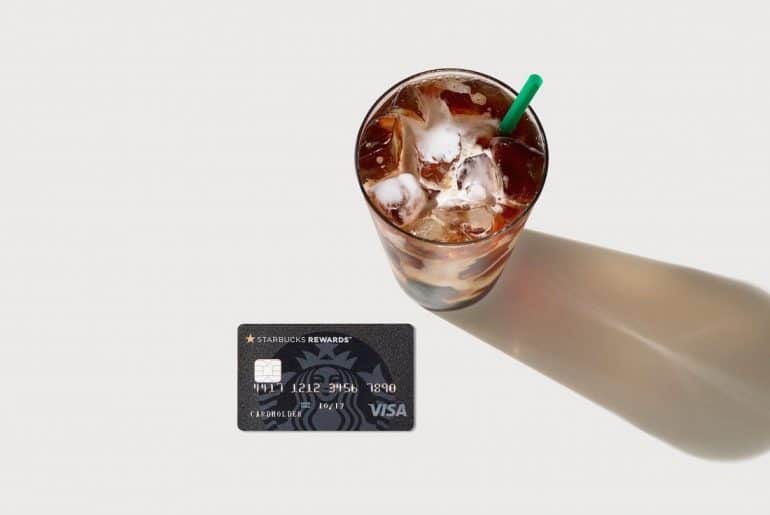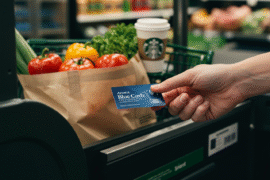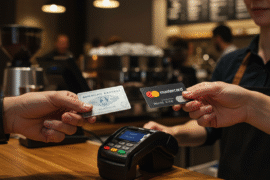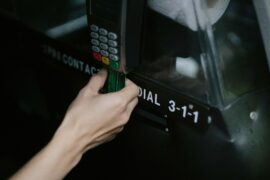This article may contain references to products or services from one or more of our advertisers or partners. We may receive compensation when you click on links to those products or services. Nonetheless, our opinions are our own.

Updated by Albert Fang
The Starbucks credit card, officially known as the Starbucks Reward Visa Card, is designed for loyal fans of the brand. It offers a rather complex set of rewards, freebies, and extras compared to most other credit cards. If you are already a regular Starbucks customer, the rewards can add up fast, especially in the first year when you get a massive number of bonus points. The basic features, pros, and cons of the card are outlined below.
What is the Starbucks Reward Visa Card?
The Starbucks Reward Visa Card was a media sensation when it debuted in early 2018 and has been a financial success for the company. It is strikingly similar, in many ways, to other retail store credit cards but does offer a few perks that most cards don’t.
For one, instead of earning cashback and discounted travel for using the card, you earn free food and drinks at Starbucks. Plus, in order to access the reward points, you’ll need to load money directly from the card to your Starbucks digital cash card.
What are the perks of the Starbucks Reward Visa Card?
Cardholders earn bonus points when they make retail purchases. They even get a couple of thousand points just for signing up. For standard, non-Starbucks retail purchases, you earn bonus points at the rate of .25 points per dollar spent. But when you load money from the credit card to your Starbucks digital cash card, you earn one point per dollar transferred.
In addition to the “earned” points, you also get 2,750 points when you spend $500 during the first three months you have the credit card. Extensive research on the value of Starbucks “points” reveals that an average company loyalist can earn around $170 worth of bonuses per year, compared to about $70 earned on the typical retail credit card.
Cardholders also get eight free Starbucks items each year. The price of the items varies and the entire free promotion is designed to highlight and advertise new and special products from the coffee retailer.
Finally, cardholders get price protection on items they buy that go down in price within three months, free rental car insurance, and additional warranty time on products that come with warranties of under three years.
Starbucks Reward Visa fees and rates
The card’s APR ranges from 7.24% to 24.24%, while its cash advance percentage is 26.24 percent. There’s also a 5 percent fee on cash advances and balance transfers. Late fees range up to $37, foreign transaction fees are 3 percent and the annual fee is $49.
Users need to note that the Starbucks card is similar to many other retail, or so-called “store cards” in that it comes with an interest rate that is not competitive with standard, bank credit cards. It’s also important to realize that the Starbucks card charges a $49 annual fee, which counter-balances some of the bonuses and rewards.
Credit card tradeoffs
Starbucks customers who already have the re-loadable digital card for in-store purchases might view the credit card rewards as good value even with the high annual fee and generally average interest rates and fees compared to a standard retail card.

Reviewed and edited by Albert Fang.
See a typo or want to suggest an edit/revision to the content? Use the contact us form to provide feedback.
At FangWallet, we value editorial integrity and open collaboration in curating quality content for readers to enjoy. Much appreciated for the assist.
Did you like our article and find it insightful? We encourage sharing the article link with family and friends to benefit as well - better yet, sharing on social media. Thank you for the support! 🍉
Article Title: Starbucks Credit Card Review: Should You Apply?
https://fangwallet.com/2020/01/03/starbucks-credit-card-review-should-you-apply/The FangWallet Promise
FangWallet is an editorially independent resource - founded on breaking down challenging financial concepts for anyone to understand since 2014. While we adhere to editorial integrity, note that this post may contain references to products from our partners.
The FangWallet promise is always to have your best interest in mind and be transparent and honest about the financial picture.
Become an Insider

Subscribe to get a free daily budget planner printable to help get your money on track!
Make passive money the right way. No spam.
Editorial Disclaimer: The editorial content on this page is not provided by any of the companies mentioned. The opinions expressed here are the author's alone.
The content of this website is for informational purposes only and does not represent investment advice, or an offer or solicitation to buy or sell any security, investment, or product. Investors are encouraged to do their own due diligence, and, if necessary, consult professional advising before making any investment decisions. Investing involves a high degree of risk, and financial losses may occur including the potential loss of principal.
Source Citation References:
+ Inspo












































